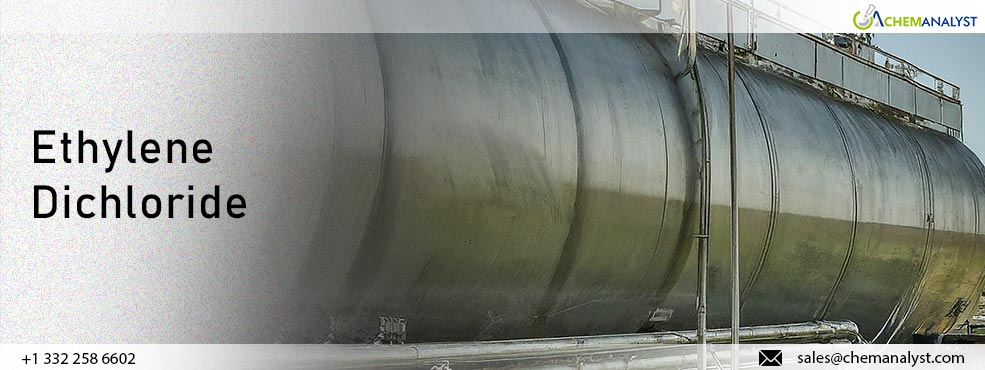Welcome To ChemAnalyst

Global Ethylene Dichloride (EDC) prices have shown volatility and varied trends with the week ending on 24th May. In Europe, specifically in the Netherlands, EDC prices increased by 1.6%, while in Asia, prices remained stable, and in the American market, they also remained unchanged.
In the Asian market, particularly in Japan, EDC prices rose by 3% during the week ending May 24, 2024, climbing from USD 335/MT to USD 345/MT. This increase is largely due to the depreciation of the Yen, which is influenced by the interest rate disparity between the Bank of Japan and other central banks. Refiners in South Korea and Japan are watching the US dollar's strength against Asian currencies closely, as a significant weakening of the Won and Yen negatively impacts crude import economics and domestic fuel sales. The robust US dollar, coupled with weaker local currencies, is problematic for these refiners, who rely heavily on imports for refinery feedstocks. Additionally, domestic inflation, consumer sentiment, and retail fuel prices are highly responsive to currency fluctuations. The depreciation of risk-sensitive Asian currencies is exacerbated by a low Bank of Korea policy interest rate and a diminishing trade surplus in recent years. This weakening of local currencies has significantly driven up EDC prices. Moreover, prices in the Polyvinyl Chloride (PVC) derivative market have also risen by nearly 3%, aligning with the increase in EDC prices. The concurrent rise in upstream EDC and derivative PVC markets highlights the broader economic and market dynamics impacting EDC pricing.
In the North American market, prices for Ethylene Dichloride (EDC) in the US have remained stable, primarily due to a decline in crude oil prices. This stability is influenced by several factors, including fluctuations in crude prices ahead of the upcoming OPEC+ policy meeting. Additionally, stronger-than-expected U.S. business activity has reduced expectations of Federal Reserve interest rate cuts this year, which has also weighed on crude prices. Despite a drop in crude oil prices during public holidays in Britain and the US, the long-term outlook remains uncertain due to the ongoing imbalance between supply and demand. Concerns about interest rates may limit further significant increases in oil prices. Crude oil prices have been volatile this year due to geopolitical tensions and uncertainties in global supply and demand. Stability in the PVC derivative market has also supported EDC prices, even as the downstream construction sector has declined. Extreme heat is expected to impact the US economy by reducing productivity among construction workers, as much of this work is done outdoors. This reduced productivity could slow capital accumulation, leading to long-term economic impacts. Consequently, the stable EDC prices reflect these broader market and economic dynamics.
In the European market, EDC prices in the Netherlands increased by 1.6%. This rise is mainly due to higher prices in the upstream Ethylene market, driven by increased Naphtha prices and higher demand for EDC in Europe. Despite a decline in oil prices, EDC prices remained elevated. The quiet trade in oil on Monday, due to public holidays in the US and Britain, saw prices rise by over 1%, following concerns about US interest rates amid persistent inflation. In Germany, the construction and trade sectors helped avoid a recession at the beginning of the year, setting the stage for a consumer-led recovery. However, prices in the PVC derivative sector declined due to low activity in the construction sector and the impact of public holidays. Overall, the increase in EDC prices in the European market is primarily due to the rise in the upstream ethylene market and increased feedstock demand, despite other market fluctuations and challenges.
According to ChemAnalyst, there is an anticipation of increasing prices for Ethylene Dichloride (EDC) in the forthcoming weeks due to expected rise in crude oil prices. Crude prices are currently experiencing upward pressure ahead of the upcoming OPEC+ policy meeting. The international crude oil market is volatile, leading to increased domestic naphtha wait-and-see sentiment. However, the long-term outlook for oil markets remains uncertain due to the ongoing imbalance between supply and demand. The meeting of the OPEC+ coalition and its allies has been delayed by one day and is now scheduled for June 2nd. This situation may also contribute to the rise in production cost for EDC in the global market contributing to the upward pressure on prices.
We use cookies to deliver the best possible experience on our website. To learn more, visit our Privacy Policy. By continuing to use this site or by closing this box, you consent to our use of cookies. More info.
